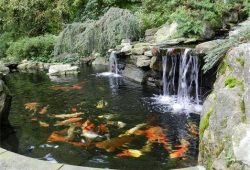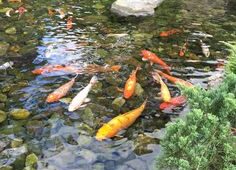The African Upside-Down Catfish
The article gives you some information on The African Upside-Down Catfish.

Contents
A Popular Fish for a Community Freshwater Aquarium
The natural habitat of the Upside-Down Catfish is the Zaire and Niger River basins of Africa. They are generally nocturnal and feed on plants, crustaceans and insects.
The Latin name for these catfish is synodontis nigriventris.
Why do Upside-Down Catfish Swim on Their Backs?
It is theorized that this helps these catfish to easily eat mosquito larvae that land on the water’s surface. It also enables these catfish to clean the underside of plants and driftwood in areas where other fish cannot access.
Traits of the Upside-Down Catfish
These catfish have large eyes, a big adipose fin, a forked tail and three pairs of barbells. Their light brown body is covered with different shades of brown blotches that vary in size.
The underside of the Upside-Down Catfish is a darker brown which is completely opposite of fish that swim with their bellies downwards. This reverse coloration seems to protect the Upside-Down Catfish from predators when swimming near the surface of the water.
In an aquarium, these catfish grow to approximately four to six inches. Their average life span is six years. Upside-Down Catfish are very peaceful and can be kept in a community aquarium.
It is recommended to keep a minimum of three catfish in an aquarium because they like to travel in schools. Upside-Down Catfish are active in all tank levels but hide or lay idle during the day.
Aquarium Conditions for Upside-Down Catfish
- The aquarium size could be at least 20-gallon long tank in order to provide adequate swimming room.
- Water hardness should be anywhere from 5 to 20 DH.
- Water PH should range from 6.5 to 8. These fish seem to do better in PH over 7 but can survive in PH as low as 6.
- Water temperature should be between 68 and 82 degrees Fahrenheit.
- They are not picky eaters and can be fed any type of fish food.
- The aquarium should contain rock caves or ledges for a resting place.
- Driftwood and plants with broad leaves are desirable because these catfish like to congregate and feed off the undersides.
Upside-Down Catfish like to graze on alga to help supplement their diet so they can be used instead of an Alga Eater in an aquarium.
Because Upside-Down Catfish are compatible with most fish, they are ideal for a community aquarium. They are scavengers so they help keep the tank clean and they adapt to most water conditions so they are easy to keep.



